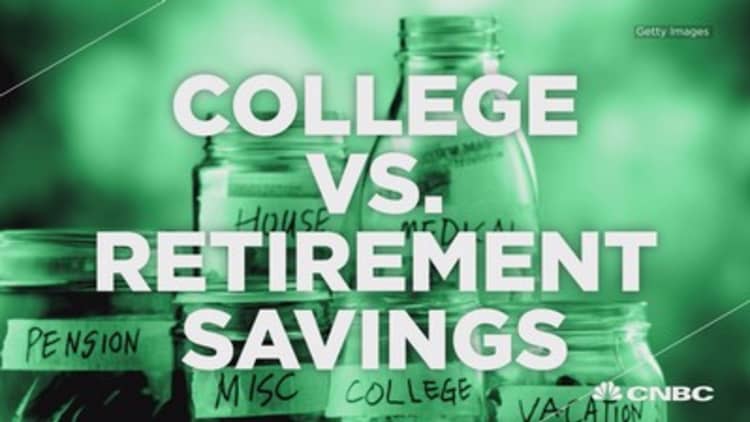
Struggling to figure out how they'll pay for rising college costs, some parents are willing to dip into their retirement savings and delay retirement but may not realize that in doing so they may be jeopardizing their own financial security.
Some parents may not mind delaying retirement or may believe that using their retirement fund is the best alternative to help their child pay for college. More than half of parents recently surveyed by T.Rowe Price agreed that they'd rather dip into their retirement savings than have their child take out student loans. Parents worry about the long-term impact of student loan debt. Two out of five parents who used student loans to pay for their own college education said their payments have impacted their ability to save for retirement, according to that survey.
As a result, parents may decide to use a portion of their retirement fund for college expenses well before their son or daughter heads to campus. Sallie Mae's annual report on "How America Saves for College" found that at least 12 percent of parents who are saving for retirement plan to use at least part of that savings to help pay for college. Nearly one-third of parents surveyed by T. Rowe Price admitted to using their 401(k)s—their workplace retirement savings plans—to save for their kid's college education.
Parents realize that without sufficient savings they may have to retire later. Nearly half of the parents surveyed by T.Rowe Price said they were willing to delay retirement to pay for college.
Unfortunately, parents who are juggling everyday expenses as well as saving for long-term goals may not realize there are ways to strike a balance between saving for college while saving for retirement so that you don't have to dip into your nest egg to pay for your child's education.
Several financial advisors suggest a strategy like this to help parents save for both college and retirement:
The first dollars that you save should go into your 401(k) – or workplace retirement savings plan. Plan to contribute up to the employer match. You want the tax savings and don't want to miss out on that free money. Make sure you keep that money earmarked for retirement. No retirement plan at work? Save on your own. Put your retirement dollars in a Roth IRA, if you qualify. The after-tax money that you put in comes out tax-free in retirement. Plus, if you must dip into this account to pay for college, you can do so without paying a penalty.
Pay off credit card and other high interest debt. Think about this: You may be paying an interest rate of 13 percent or more on your credit cards—that's much higher than the rate on most student loans, even if you end up having to borrow to pay the college bills.
Also, build up your emergency fund. Save at least enough money to cover six months of living expenses.You don't want to have to raid your retirement savings or college fund to pay for unexpected expenses.
Then, put money into a 529 college savings plan. The money that you put into this account can be withdrawn tax-free for qualified higher education expenses—including tuition, fees, room and board. If you contribute to a 529 plan in your state, you'll likely get a state tax break too. Compare 529 plans at www.savingforcollege.com and www.collegesavings.org.
Finally, don't worry if you can't save enough money to cover the all college costs. Remember, you—and your child—can always borrow for college, but you can't borrow for retirement.


